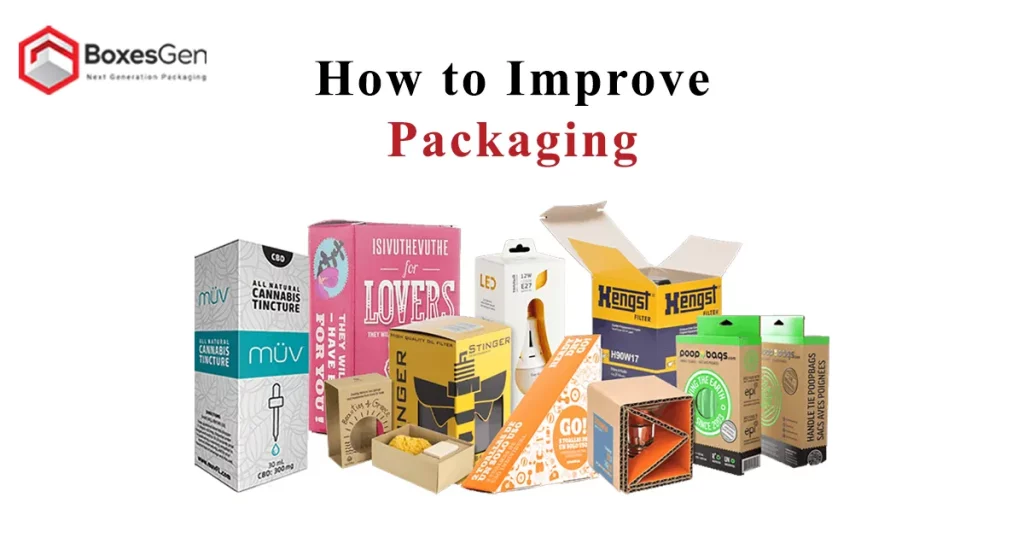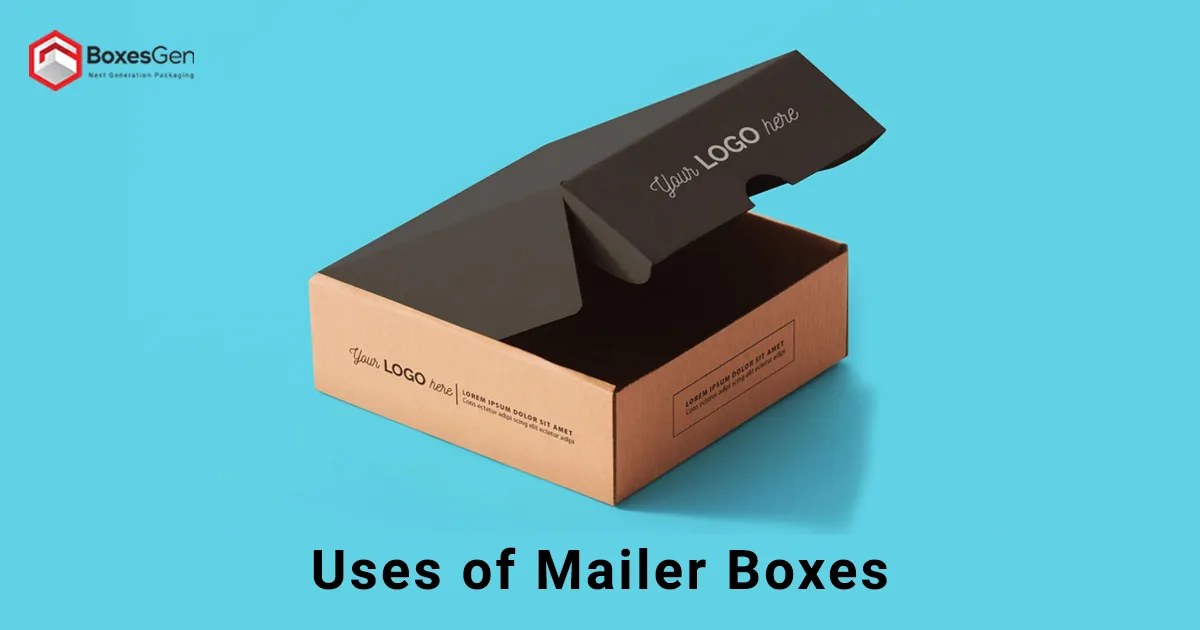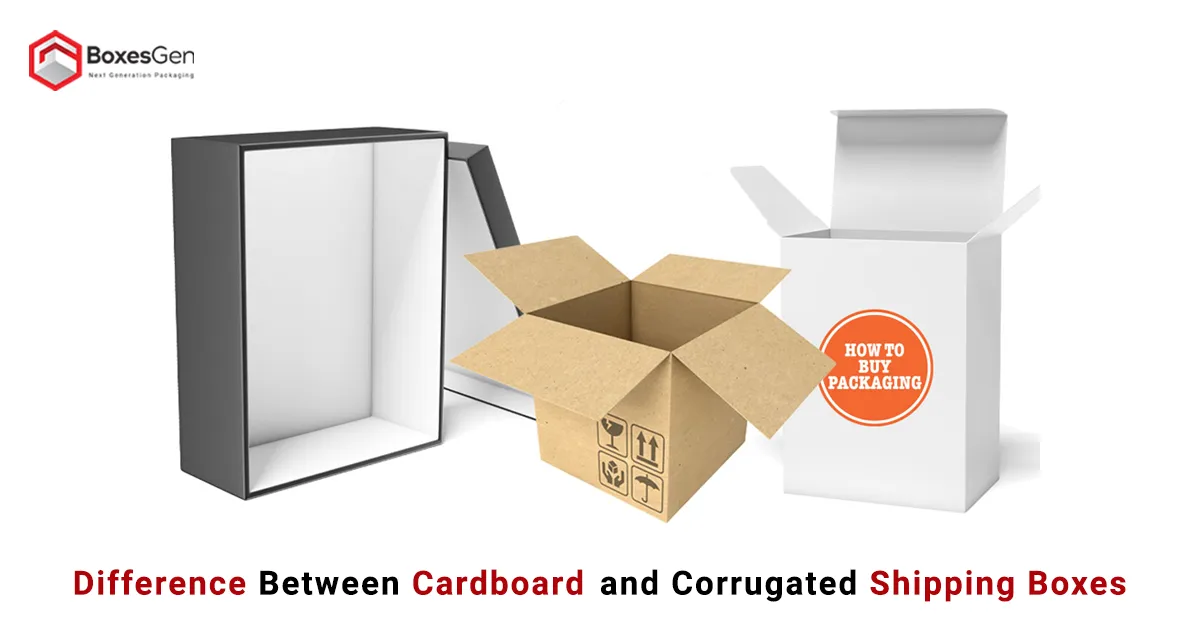How to Improve Packaging?
Effective packaging is crucial for brand success in the fast-paced world of commerce. As consumers become more environmentally conscious and competition grows, businesses must evolve their packaging strategies to meet changing demands. This article explores various ways to improve packaging, from sustainable alternatives to strategic design choices.
Compostable and Biodegradable Plastic Alternatives
One significant step towards improving packaging is the adoption of compostable and biodegradable plastic alternatives. Traditional plastics contribute significantly to environmental pollution, taking centuries to decompose. Compostable materials, derived from renewable sources, break down naturally, leaving minimal environmental impact behind. Brands can explore innovative materials like cornstarch-based plastics, mycelium packaging, or seaweed-based alternatives.
Implement Automation
Businesses can invest in automation to streamline Custom Packaging processes and improve efficiency. Automated packaging systems reduce labor costs and improve accuracy and speed. Robotics and smart technologies can be integrated into packaging lines for sorting, filling, and sealing tasks. This boosts productivity, ensures consistency, and reduces the risk of human errors in the Packaging Process.
Optimize Packaging Design
The design of a package plays a pivotal role in attracting consumers. Optimizing packaging design involves creating visually appealing, functional, and user-friendly packages. Brands should consider product visibility, ease of use, and aesthetic appeal. Interactive packaging designs that engage consumers or tell a brand story can create a memorable and positive impression.
Analyze the Competition
Staying ahead in the market requires a keen understanding of competitors. Analyzing competitors’ packaging strategies provides valuable insights into industry trends and consumer preferences. Identify what works well for others and strategize how to differentiate your packaging. Pay attention to materials, colors, and messaging to ensure your brand stands out on the shelves.
Create Your Package Concept
Developing a unique packaging concept is essential for brand identity. Consider your target audience, brand values, and the product when creating a packaging concept. Utilize market research to understand consumer preferences and incorporate these insights into the design. A well-thought-out concept attracts customers and establishes a strong brand image.
Determine a Packaging Strategy
A successful packaging strategy aligns with overall business goals. Consider cost, sustainability, and branding when formulating a packaging strategy. Determine whether eco-friendly, premium, or functional packaging best suits your brand and product. A well-defined strategy guides decision-making and ensures consistency across different product lines.
Recycled Packaging Materials
Embracing Recycled Cardboard Packaging Materials is a significant step towards sustainability. Post-consumer recycled content, such as recycled paper or Cardboard boxes, reduces the environmental impact of packaging. Educate consumers about using recycled materials in packaging to increase brand reputation and foster a sense of responsibility.
Use Recyclable Materials
Opting for easily recyclable materials supports a circular economy. Choose packaging materials widely accepted by recycling facilities, making it convenient for consumers to dispose of the packaging responsibly. Communicate recyclability on the packaging to encourage environmentally conscious behavior.
Address Diverse Packaging Needs
Consider the diversity of your consumer base when designing packaging. Cater to various needs such as convenience, functionality, and accessibility. Packaging accommodating different demographics ensures a broader market reach and boosts customer satisfaction.
Cut Down on Excess Packaging
Reducing excess packaging is not only environmentally friendly but also cost-effective. Streamline packaging by eliminating unnecessary layers, inserts, or oversized custom boxes. Implementing minimalist designs not only reduces material usage but also increases the overall aesthetic appeal of the product.
Branded Cardboard Outer Packaging
Create a strong brand presence with branded cardboard outer packaging. This protects the product during transit and serves as a visual extension of the brand. Customize outer packaging with logos, taglines, and visuals that resonate with your brand identity, making the unboxing experience memorable for customers.
Choose Colors Carefully
Color psychology plays a crucial role in influencing consumer perception. Choose colors that align with your brand identity and evoke the desired emotions. Consider cultural preferences and market trends when selecting colors for packaging. Consistent and thoughtful color choices contribute to brand recognition and recall.
Communicate Performance Metrics to Your Team
Establishing clear performance metrics for packaging ensures continuous improvement. Monitor factors such as packaging waste, customer feedback, and cost-effectiveness. Regularly communicate these metrics to the packaging team, fostering a culture of accountability and encouraging innovative solutions to augment packaging processes.
Consider the Environment
Environmental consciousness should be a driving force in packaging improvement. Prioritize environmentally friendly materials and processes, aiming for a minimal ecological footprint. Communicate these efforts transparently to consumers, building trust and loyalty among environmentally conscious customers.
Consider the Unboxing Experience
The unboxing experience is a crucial aspect of packaging that influences customer satisfaction. Invest in thoughtful packaging designs that augment the excitement and joy of opening a product. Consider unique opening mechanisms, personalized messages, or exclusive extras to create a memorable and positive unboxing experience.
Everything Custom Packaging
Custom packaging adds a touch of exclusivity to products. Tailor packaging designs to fit the specific characteristics of each product. From shape and size to graphics and messaging, personalized packaging creates a sense of uniqueness and reinforces brand identity.
Fit the Package to the Product
Ensure that the packaging is appropriate for the product it contains. A snug fit protects the product during transit and minimizes the need for excess materials. Customizing Packaging Box Dimensions to match product specifications demonstrates attention to detail and improves overall product presentation.
Go Green with Packaging
Embrace eco-friendly practices throughout the packaging lifecycle. From materials sourcing to disposal, prioritize sustainability. Explore renewable energy sources, carbon-neutral packaging, and eco-friendly inks. Positioning your brand as environmentally responsible attracts environmentally conscious consumers and contributes to a positive brand image.
Conclusion
The evolution of packaging is an ongoing process that demands adaptability and innovation from businesses. The journey to improve packaging involves a holistic approach, incorporating sustainability, efficiency, and consumer-centric design. By embracing compostable alternatives, implementing automation, and optimizing box packaging design, brands can navigate the competitive landscape successfully. Addressing environmental concerns, reducing excess packaging, and prioritizing the unboxing experience contribute to a positive brand image and customer satisfaction. As businesses strive to improve packaging, staying informed about industry trends, analyzing competitors, and considering diverse consumer needs become integral. By answering the frequently asked questions, businesses can ensure a comprehensive understanding of the importance of packaging and foster continuous improvement in this ever-evolving aspect of commerce.
Frequently Asked Questions on How to Improve Packaging
How Can Packaging Be Improved?
Packaging can be improved by embracing sustainable materials, optimizing design for functionality and aesthetics, incorporating eco-friendly practices, and staying informed about industry trends and consumer preferences.
How Do I Upgrade My Packaging?
Upgrade packaging by focusing on eco-friendly alternatives, enhancing design aesthetics, ensuring durability, and aligning packaging with brand values and consumer expectations.
How Do You Achieve Effective Packaging?
Effective packaging is achieved by aligning design with brand identity, addressing diverse consumer needs, prioritizing sustainability, ensuring product protection, and communicating information clearly to the target audience.
How Do You Make High-Quality Packaging?
High-quality packaging is crafted using durable materials, incorporating innovative design elements, meeting functional and aesthetic requirements, and adhering to industry standards for safety and performance.
Why Do We Need to Improve Packaging?
Improving packaging is crucial to meet changing consumer demands, stay competitive in the market, reduce environmental impact, and increase brand image and customer satisfaction.
What Is Effective Packaging?
Effective packaging successfully communicates brand identity, meets consumer needs, protects the product, aligns with sustainability goals, and improves the overall customer experience.
How Can We Prevent Poor Packaging?
Preventing poor packaging involves thorough market research, investing in quality materials, regularly evaluating and updating packaging processes, and implementing strict quality control measures to ensure consistency.
How Good Packaging May Lead to Improved?
Good packaging attracts customers, increases brand perception, contributes to a positive unboxing experience, builds customer loyalty, and ultimately leads to improved sales and market success.
What Are the Six Importance of Packaging?
The six important aspects of packaging include protection of the product, effective communication, consumer convenience, branding opportunities, sustainability considerations, and differentiation from competitors.
How Do You Solve Packaging Waste?
Solving packaging waste involves adopting recyclable and compostable materials, minimizing excess packaging, educating consumers on responsible disposal, and implementing recycling programs to reduce the overall environmental impact.
How Can We Improve the Packaging of Food Products?
Improving food packaging involves prioritizing freshness, using eco-friendly materials, ensuring proper labeling for consumer information, and considering convenience and safety features for handling and storing food products.
Why Should We Reduce Packaging?
Reducing packaging is essential to minimize environmental impact, decrease waste in landfills, and meet consumer preferences for sustainable and eco-friendly practices, ultimately contributing to a healthier planet.
Why Is Packaging a Problem?
Packaging can be problematic due to excessive waste, environmental concerns, and consumer dissatisfaction. Poorly designed packaging may also contribute to resource depletion and pollution, posing challenges for businesses and the environment.
Why Is Sustainable Packaging Better?
Sustainable packaging is better as it reduces environmental impact, minimizes resource depletion, addresses consumer preferences for eco-friendly options, and contributes to a positive brand image and corporate responsibility.
How Can We Reduce Plastic in Packaging?
Reducing plastic in packaging involves exploring alternative materials like paper, cardboard, and biodegradable plastics, adopting refillable and reusable packaging concepts, and raising awareness about the environmental consequences of plastic waste.








